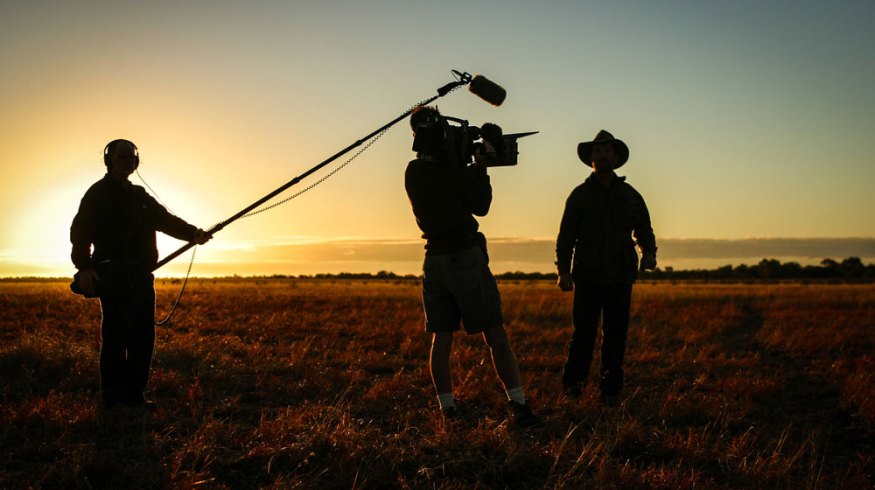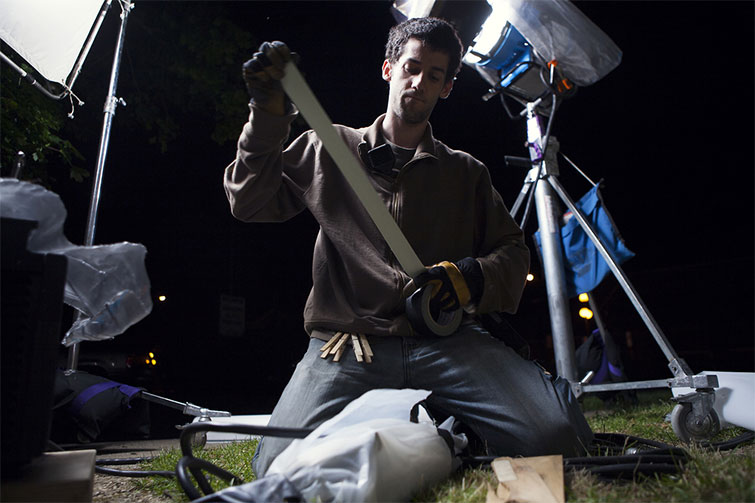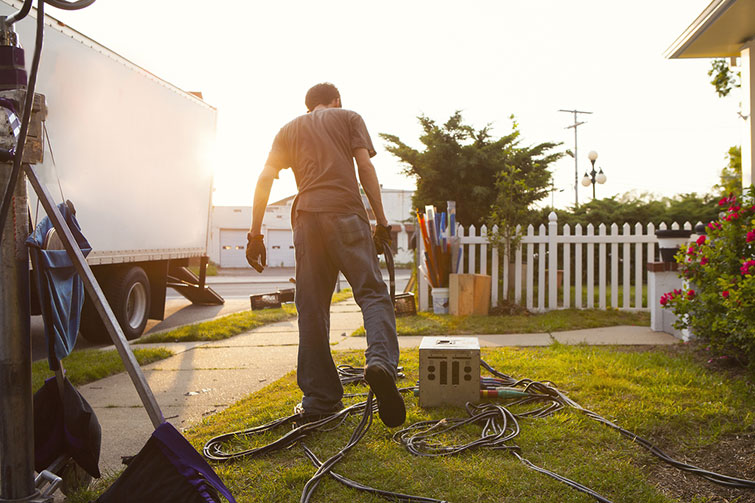
$10K vs. $100K vs. $500K: Feature Film Budgets Compared
These budget breakdowns demonstrate the wild difference money makes when shooting a feature film. Here’s what you can expect.
$10K, $100K, and $500K — they all sound like a lot of money. And they are. But they are also not as much as you might think when it comes to producing a feature film — especially a feature that will be compared to projects with budgets of millions (or hundreds of millions) of dollars.
Here’s what you can expect from these three sample budgets.
Making a Film on a $10,000 Budget
So let’s start with $10K. I’m going to say $10K, but it’s really anywhere between $10-$25K. This is as much as most people have in savings or could put on a credit card (I don’t recommend the latter).
- It’s probably not going to be a SAG (Screen Actors Guild) project, so your actors will be non-union. Your film is certainly not going to be union for other departments, including cinematography, electrical, sound, grip, catering, etc. — these will all be way over your budget.
- You’re probably not going to pay anyone very much money, maybe around $50 a day. You’re going to shoot in under two weeks, and most of your money is going toward one main location and feeding everyone.
- You’ll have to choose a script that’s very contained (that only takes place in a couple of locations), and you’re going to have to know a lot of other filmmakers.
- At $10K, you won’t be able to afford to pay $700-1,500 a day for a professional sound person.
- You’re going to be working on your own script, or a script that someone has given to you (because you can’t afford to buy one).
- You’re going to be getting locations of friends, family, yourself, or shooting outside in a park or on the street, if your city allows you to shoot publicly without a permit.
Generally, you’re going to have to cut every corner you can and only use your budget to bail you out of an emergency.
So the money will go toward whatever your network can’t supply.
- Hiring a camera or lenses (but probably not both).
- Lights and grip (some you’ll probably borrow or get for free — either the DP or gaffer will have them).
- Post-production. If you’re not a colorist or sound editor or mixer or musician, you’re going to have to pay one of those people (but hopefully not all).
- You can make a movie for zero dollars; it just means that you’re going to be asking for favors from everyone, all the time, which can take longer than if you just worked to save up the money and paid for whatever you couldn’t get as a favor.
The budget of a $10K movie isn’t that complicated because (basically) you set out to get everything for free, and then when something falls through, or when you just can’t find it no matter how hard you look, you have to dip into your limited resources.
A lot of people do this every year. Some of them break out and find wider acceptance. It’s basically a film school. You get to spend a month preparing, a week shooting, and then 3-6 months in post. After that, you try to find an audience for your film.
It’s a great training ground for filmmakers of all kinds.
Making a Film on a $100,000 Budget

Image via 9387388673.
At $100K, you have some money, but you don’t have enough money to pay full price for everything.
You’re probably going to move up to SAG actors because you want a couple of recognizable faces (or names) in your film. These are people at the end or beginning of their careers — actors transitioning from TV or Broadway into movies.
At this budget level, you’re going to pay everyone something.
- You’re going to shoot for 18 days or three weeks, taking Sunday off.
- You’re going to be able to hire camera, lenses, and a grip, but not at full rate.
- You’re going to have to find people who believe in the vision of the film in order to make it.
- You’re still going to be directing the movie yourself because you still can’t pay the $100K it costs to get someone from the DGA (Director’s Guild of America).
- Hopefully, you’ve made a $10K movie already, and you know the process. You’re aware of your blind spots from the first film, so you’re going into the second film with your eyes more open.
- You can probably afford a professional colorist, professional sound mix, and professional musicians — all at a reduced price. You can afford to pay $2K for a mix, not $20K, and generally you still need to beg, borrow, and steal everything.
By the time you write the script, cast it, find all the locations, shoot it, post-produce it, and find a buyer for the film, a year will have gone by. $100K is real money. People expect a return. You need to sell that movie and get that money back, which can take a lot of time. That’s time that you’re not working at a regular job.
$100k will allow you to give yourself a small wage, but you’re probably still going to need to work part-time in order to avoid dipping into the budget to support yourself while you make the film.
Making a Film on a $500,000 Budget

Image via 9387388673.
This really could be anywhere from $500K to $1 million. This is the first time you’re paying union rates for your sound mixers, transportation, union members, AC (Assistant Camera), post, etc. You simply find the people you want to work with and ask them what their rate is. You’re not going to pay them their TV commercial rate of $8K a day; you’ll pay their feature rate of maybe $800 dollars a day.
- You’re going to pay for a casting director who will handle all the SAG elements for you.
- You’ll probably give yourself a wage of about $50K, depending on your living expenses, and you’re probably going to have a producer (as well) at the same price, which needs to cover your costs so you can work on your film and sell it. Remember, it takes 18 months to get a feature film from inception to sale.
Having said that, there is very little money in a $500K budget for any of the things that you see in major Hollywood movies.
- There’s very little money for visual effects.
- You can’t fix things in post.
- You’re probably going to get one “name actor” at Schedule F, which is $60-$70K. Everyone else is going to be a bit player or a favor.
- You’re certainly not going to get Brad Pitt or Charlize Theron. You’re just going to try and find a rising star who really wants to be in your film.
- You’re still going to have to work with the new, hungry post-production houses. You’re not going to walk into Industrial Light & Magic and say, “I want a CGI character.”
- You’re going to really have to keep it very bare bones, but at $500K-$1 million, you’re going to at least be able to pay for most of what you need.
That’s the breakdown for these different feature film budgets. I hope you’ll be making one in the very near future.
Cover image via Janelle Lugge.
Looking for more on the film and video industry? Check out these articles.
- The History and Power of Sound Design in the Film Industry
- Filmmaking Fads and Trends: Don’t Let Them Bother You
- These Tribeca Docs Will Renew Your Faith In The Power of The Camera
- The Cameras and Lenses Behind the Marvel Cinematic Universe
- Breakout Director Kat Candler on the Best Festivals for First-Time Filmmakers





